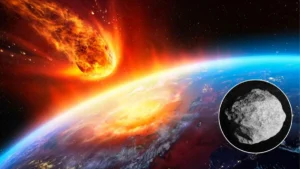
The Starliner spacecraft, from the aeronautical giant Boeing, successfully took off this Wednesday, June 5, from the southeastern United States towards the International Space Station (ISS), carrying astronauts on board for the first time, after two previous attempts were frustrated shortly after. launch.
The astronauts of the US space agency (NASA) Butch Wilmore and Suni Williams took off at 10:52 in the morning from the Cape Canaveral Space Force Station, in the state of Florida (southeast), for a stay of approximately one week in the orbital laboratory.
“Suni and I are honored to share this dream of space flight with each and every one of you,” said Wilmore, commander of the test flight, just before takeoff of the rocket from the United Launch Alliance (ULA) group, the company joint venture formed by Boeing and Lockheed Martin.
“Let’s put some fire on this rocket and push it into the sky“, he expressed with good humor.
The third time turned out to be the charm for Boeing, after two attempts were aborted for technical reasons.
Looking for a respite
Starliner becomes the sixth type of American-built spacecraft to carry NASA astronauts, following the Mercury, Gemini and Apollo programs in the 1960s and 1970s, the space shuttle from 1981 to 2011, and the Crew Dragon from SpaceX starting in 2020.
But Boeing’s troubled space program has faced years of delays and adversity.
Meanwhile, NASA seeks to certify Boeing as a second commercial operator to transport its crews to the ISS.
SpaceX, owned by magnate Elon Musk, has been playing this role for four years.
Both companies received multimillion-dollar contracts in 2014 to develop their manned and autonomously piloted capsules, after the Space Shuttle program came to an end in 2011, which had left the United States temporarily dependent on Russian rockets to carry out its trips. .
Boeing, with its 100 years of history, was greatly favored over its then upstart competitor, but its program was falling behind.
setbacks
The failures of this mission ranged from a software glitch that put the spacecraft on a bad trajectory in its first unmanned test to the discovery that the cabin was filled with flammable electrical insulation tape after the second.
In both cancellations, astronauts Wilmore and Williams were prepared for launch, but were forced to return to strict quarantines in their cabins.
The most recent attempt, last Saturday, was dramatically suspended with less than four minutes left in the countdown.when the ground launch computer went into an automatic pause.
Later, it was determined that the problem was due to a faulty power supply. A valve thwarted a previous attempt on May 6, hours before takeoff.
As crews worked to replace the rocket’s faulty valve, a small helium leak located in one of the spacecraft’s thrusters came to light.
Rather than changing its sealing, which required disassembling the Starliner at the factory, NASA and Boeing officials deemed it safe enough to fly as is.
Try Starliner
Wilmore and Williams are two former Navy test pilots with two space flights and will now be tasked with putting the Starliner through its paces, which includes taking manual control of the spacecraft on its way to the ISS.
While on the platform, the crew will carry out further tests, such as simulating whether the ship can be used as a safe haven in case of problems at the orbital outpost.
After undocking, Starliner will re-enter the atmosphere and make an assisted landing with a parachute and airbag in the western United States.
Source: https://www.noticiascaracol.com/mundo/boeing-lanza-su-primera-nave-tripulada-al-espacio-con-dos-astronautas-de-la-nasa-cb20


